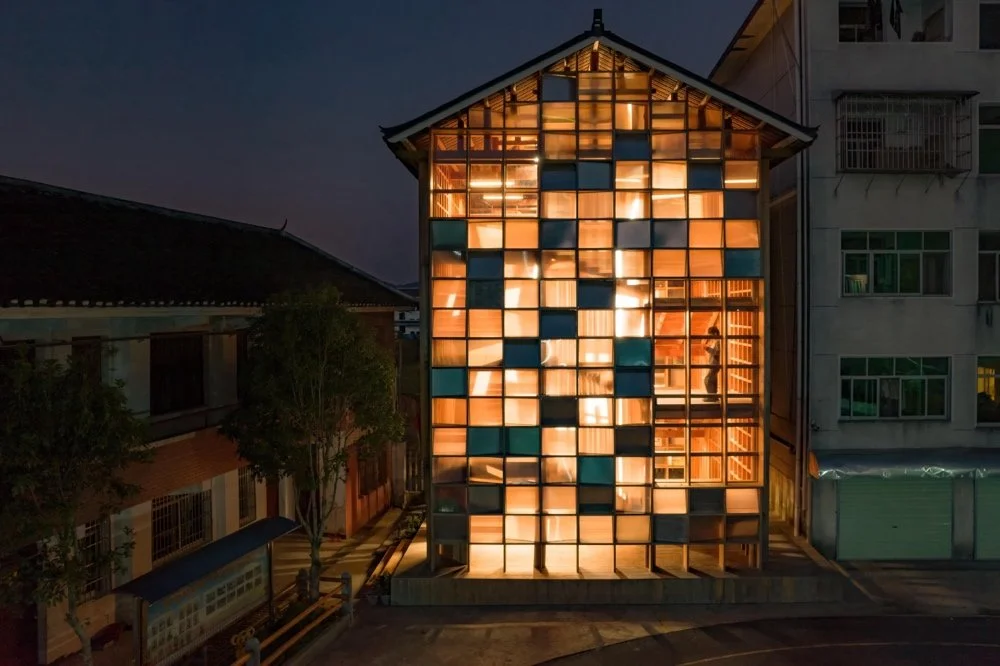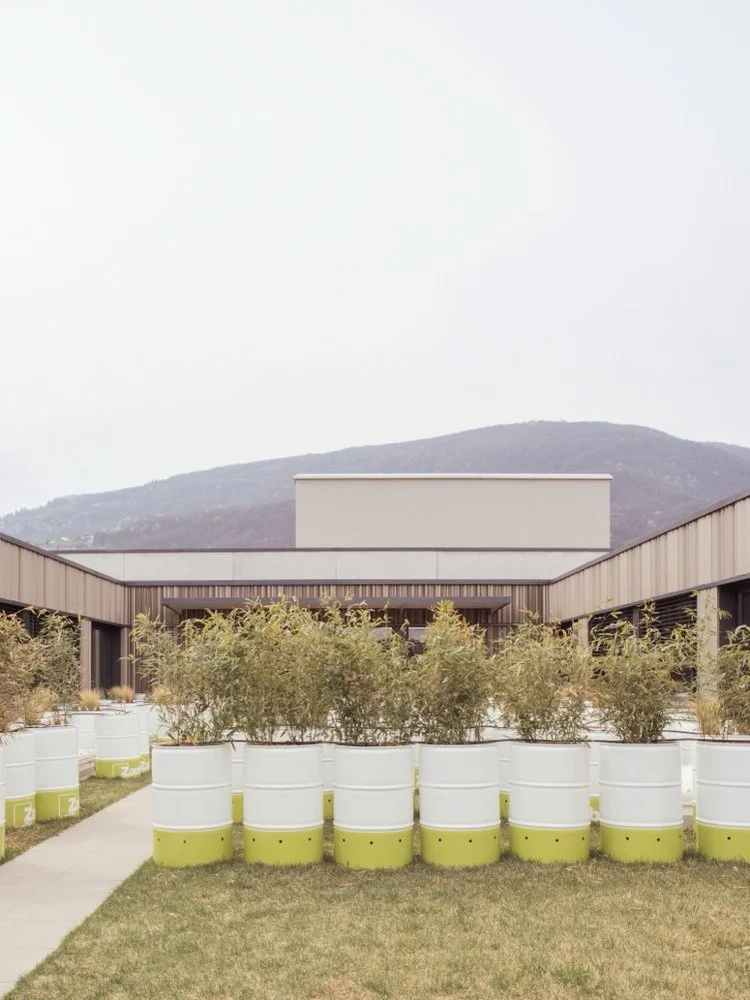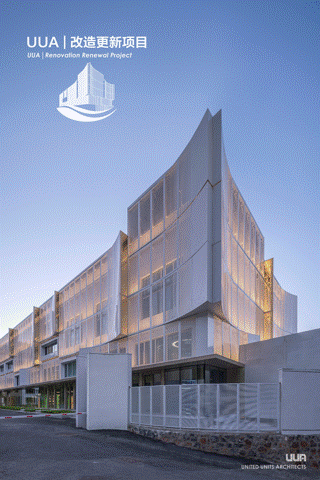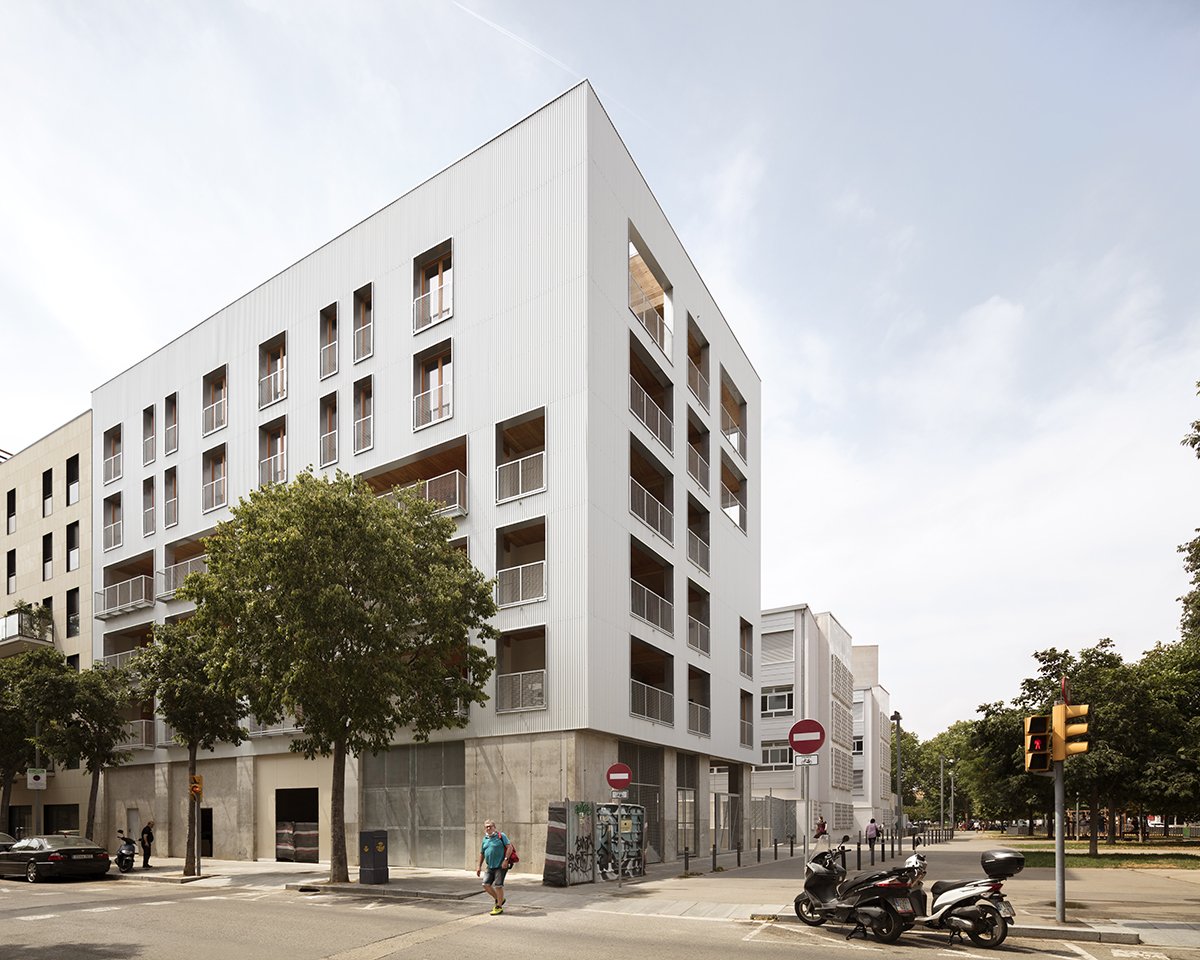坪坦书屋:重拾文化遗产的儿童图书馆
(点击图片下载原图)
▍坪坦书屋
想象一个无尽的楼梯,这是一种无穷无尽的踏步和踏板的循环,挤进一座传统的木屋中。更添神秘的是,这个楼梯没有目的地,而是本身就是一个目的地。房屋的墙壁被改造成书架和窗户的矩阵,俯瞰着一个庭院。然而,这不是一个普通的儿童图书馆。坪坦书屋是一个孩子们可以同时阅读和玩耍的地方,是中国一个新的村庄图书馆范式。
多年间,侗族村庄面临着其美丽建筑遗产衰退的现实,这一切都因外来材料——混凝土的到来而加剧。整个村庄,经过几个世纪的建设,使用的是一种可持续的材料——本土的中国杉,正迅速失去其身份。侗族的文化基因正受到当代生活和现代化追求的挑战。坪坦小学就是一个典型的例子,这所学校 20 年前在村庄边缘建成,完全由混凝土构成。这个综合体容纳了 300 多名 6 至 13 岁的孩子,包括一个大厅和食堂、教室、宿舍和行政楼,所有建筑围绕着一个操场。
基于这些原因,Condition_Lab 看到了机会,通过引入一个木结构来保留侗族的建筑基因,重新唤醒对其遗产的惊奇感。这个设计促进了一种“活的遗产”,以重新连接和启发孩子们,让他们通过直接参与来欣赏他们珍贵的文化。该项目是 Condition_Lab 在该地区设计的第二个图书馆,第一个是位于 10 公里上游的高步书屋,作为这一系列干预的“姐姐”。这个想法很简单——每个项目都采用侗族“干栏”木框架房屋的传统类型,并将其适应为当代设计,重新诠释楼梯、墙壁、窗户和地板等元素。
Condition_Lab 与当地木匠和香港中文大学建筑学院的学生密切合作。“本地”、“缓慢”和“细心”是该项目的关键特征,没有他们,图书馆将无法实现。通过参与的过程,该公司赢得了村民和校长的信任,使他们能够创造一个社会叙事,并帮助寻找赞助商来资助该项目。最终,这座建筑是由陈张敏聪慈善基金会的一笔 60 万港元的捐款建成,这笔款项涵盖了整个建设成本。
这一非凡的成就,在当代建设中鲜有发生,拥抱了一座完全使用单一材料建造的书屋,所有元素,包括墙壁、楼梯和地板,均由木材建成。唯一引入的“外来”材料是聚碳酸酯,用于外立面面板,让阳光透过并提供外部视野。建设遵循传统的侗族木工细节,主要结构连接使用的是由雄性和雌性互锁部分组成的“龙接头”。
这个项目的价值在于两个基本教训。首先,它直接关系到坪坦的孩子们,他们不仅在图书馆中享受玩耍,还学会了他们的文化在这个快速变化的世界中依然存在并保持相关性。第二个教训与这一学科本身有关,尤其是在像香港这样的城市大都会中,建筑似乎已经失去了灵魂,沦为不断要求的开发商的奴隶。这一现实使人意识到建筑的社会重要性。社会影响并不需要大量的财务投资,设计也不仅限于高端项目。简而言之,建筑必须有其目的。
▍坪坦書屋
想像一個無盡的樓梯,這是一個無窮無盡的踏步和踏板的循環,擠進一座傳統的木屋中。更添神秘的是,這個樓梯沒有目的地,而是本身就是一個目的地。房屋的牆壁被改造成書架和窗戶的矩陣,俯瞰著一個庭院。然而,這不是一個普通的兒童圖書館。坪坦書屋是一個孩子們可以同時閱讀和玩耍的地方,是中國一個新的村莊圖書館範式。
多年來,侗族村莊面臨著其美麗建築遺產衰退的現實,這一切都因外來材料——混凝土的到來而加劇。整個村莊,經過幾個世紀的建設,使用的是一種可持續的材料——本土的中國杉,正迅速失去其身份。侗族的文化基因正受到當代生活和現代化追求的挑戰。坪坦小學就是一個典型的例子,這所學校 20 年前在村莊邊緣建成,完全由混凝土構成。這個綜合體容納了 300 多名 6 至 13 歲的孩子,包括一個大廳和食堂、教室、宿舍和行政樓,所有建築圍繞著一個操場。
基於這些原因,Condition_Lab 看到了機會,通過引入一個木結構來保留侗族的建築基因,重新喚醒對其遺產的驚奇感。這個設計促進了一種“活的遺產”,以重新連接和啟發孩子們,讓他們通過直接參與來欣賞他們珍貴的文化。該項目是 Condition_Lab 在該地區設計的第二個圖書館,第一個是位於 10 公里上游的高步書屋,作為這一系列干預的“姐姐”。這個想法很簡單——每個項目都採用侗族“幹欄”木框架房屋的傳統類型,並將其適應為當代設計,重新詮釋樓梯、牆壁、窗戶和地板等元素。
Condition_Lab 與當地木匠和香港中文大學建築學院的學生密切合作。“本地”、“緩慢”和“細心”是該項目的關鍵特徵,沒有他們,圖書館將無法實現。通過參與的過程,該公司贏得了村民和校長的信任,使他們能夠創造一個社會敘事,並幫助尋找贊助商來資助該項目。最終,這座建築是由陳張敏聰慈善基金會的一筆 60 萬港元的捐款建成,這筆款項涵蓋了整個建設成本。
這一非凡的成就,在當代建設中鮮有發生,擁抱了一座完全使用單一材料建造的書屋,所有元素,包括牆壁、樓梯和地板,均由木材建成。唯一引入的“外來”材料是聚碳酸酯,用於外立面面板,讓陽光透過並提供外部視野。建設遵循傳統的侗族木工細節,主要結構連接使用的是由雄性和雌性互鎖部分組成的“龍接頭”。
這個項目的價值在於兩個基本教訓。首先,它直接關係到坪坦的孩子們,他們不僅在圖書館中享受玩耍,還學會了他們的文化在這個快速變化的世界中依然存在並保持相關性。第二個教訓與這一學科本身有關,尤其是在像香港這樣的城市大都會中,建築似乎已經失去了靈魂,淪為不斷要求的開發商的奴隸。這一現實使人意識到建築的社會重要性。社會影響並不需要大量的財務投資,設計也不僅限於高端項目。簡而言之,建築必須有其目的。
▍Pingtan Book House
Imagine a staircase that never ends, as an infinite loop of risers and treads squeezed into a traditional timber house. Adding to the mystery, the staircase has no destination, but rather is a destination itself. The walls of the house have been transformed into a matrix of bookshelves and windows overlooking a courtyard. However, this is no ordinary children’s library. The Pingtan Book House is a place where kids can read and play at the same time, and a new village library paradigm in China.
For years, Dong Minority villages have been confronted with the ever-present reality of the decline of their beautiful architectural heritage, eradicated by the arrival of a foreign material - concrete. Entire villages, built over centuries from a single sustainable material - indigenous China Fir - are rapidly losing their identity. Dong’s cultural DNA is being challenged by contemporary living and the quest to modernize. As a school built entirely of concrete 20 years ago on the edge of the village, the Pingtan primary school is a prime example of this condition. The complex, which accommodates more than 300 children aged 6-13, is comprised of a cluster of five buildings, including a Hall and Canteen, Classroom, Dormitories, and an Administration building, all surrounding a courtyard.
For these reasons, Condition_Lab saw an opportunity to make a small insertion by introducing a timber structure that retains the Dong architectural DNA, and which could reawaken a sense of wonder in their heritage. The design fosters a form of “living heritage” to reconnect and inspire children, while allowing them to appreciate their precious culture via direct engagement. The project is the second library designed by Condition_Lab in the region, with the first being Gaobu Book House, located 10 km upstream and acting as the elder sister in this family of interventions. The idea is simple - each project takes the traditional typology of the Dong “Galan” timber frame house and adapts it to a contemporary design, where elements such as stairs, walls, windows, and floor are reinterpreted.
Condition_Lab collaborated closely with local carpenters and students from the CUHK School of Architecture. 'Local', 'slow', and 'attentive' are all key attributes of the project, and the library wouldn’t be possible without them. Through a process of participation, the firm gained the trust of villagers and the school principal, enabling them to create a social narrative that also helped find donors to sponsor the project. In the end, the building was built with a single donation of 600,000 HKD from the Chan Cheung Mun Chung Charitable Fund, which covered the entire cost of construction.
This remarkable achievement, seldom occurring in contemporary construction, embraces a Book House built entirely using a single material, with every element, including walls, stairs, and floors, built with timber. The only ‘foreign’ material introduced was polycarbonate, used in façade panels that allow sunlight to filter in and provide external views. Construction followed traditional Dong carpentry details, where ‘Dragon Joints’ composed of male and female interlocking parts are used as the main structural bond.
The value of this project lies in two fundamental lessons. First, it relates directly to the children of Pingtan who, beyond enjoying playing in the library, have learned that their culture lives and remains relevant in this rapidly changing world. The second lesson relates to the discipline itself, at a moment when architecture, particularly in urban metropolises like Hong Kong, appears to have lost its soul to ever demanding developers. That reality makes one aware of the social importance of architecture. Social impact does not require large amounts of financial investment, and design is not limited to high-end projects. To put it simply, architecture must have a purpose.
建筑图纸
摄影:Sai Zhao





















